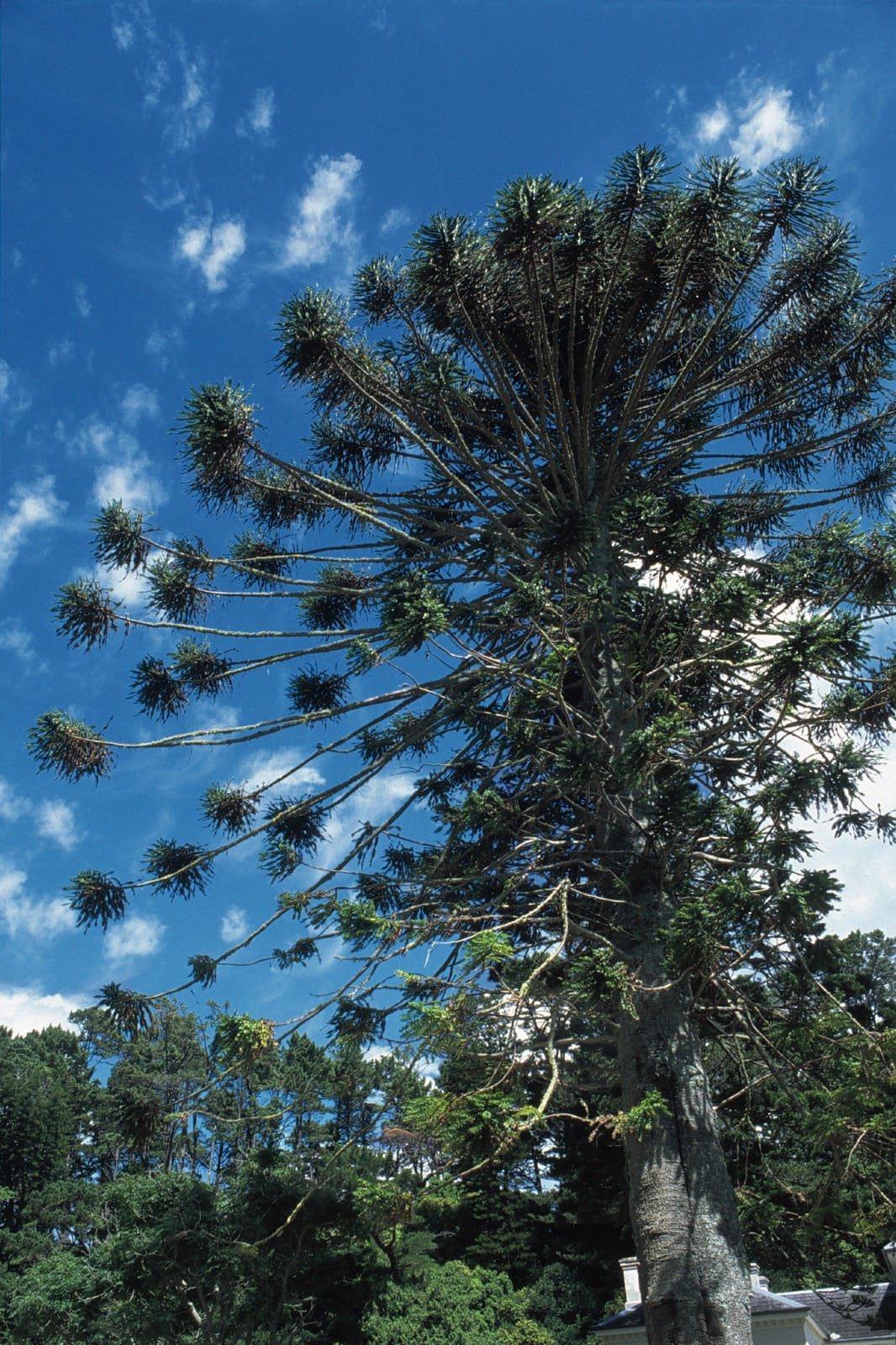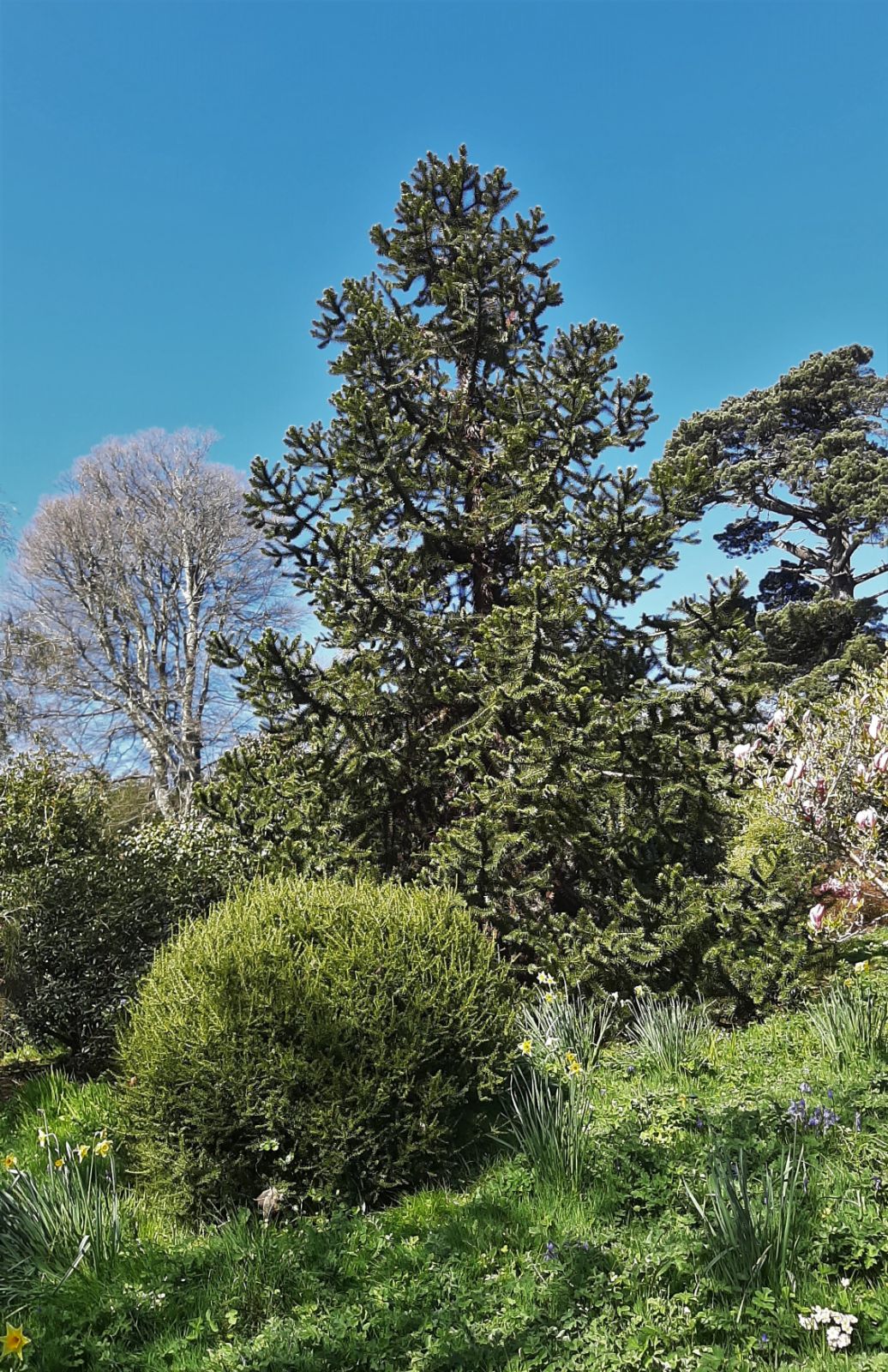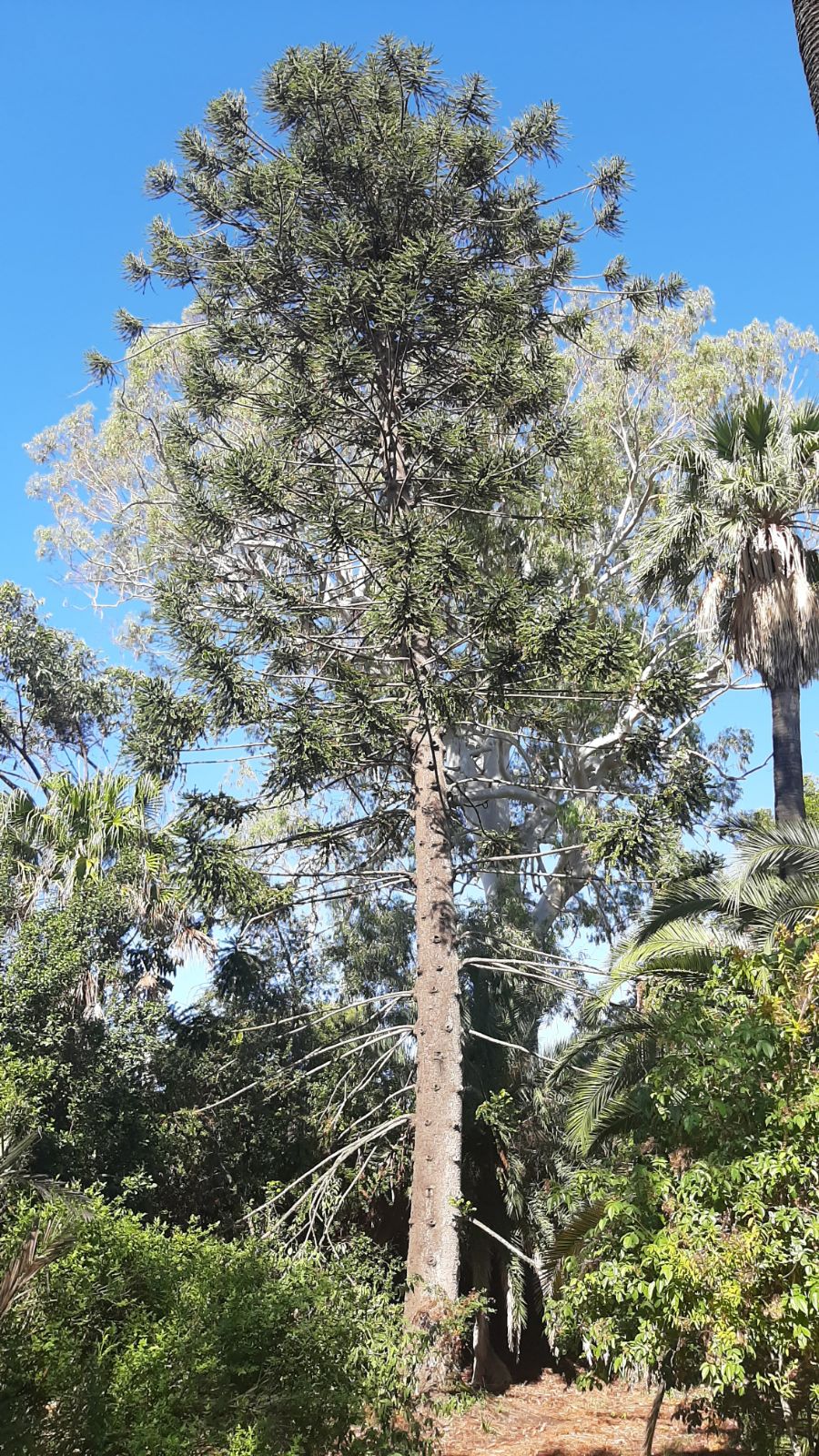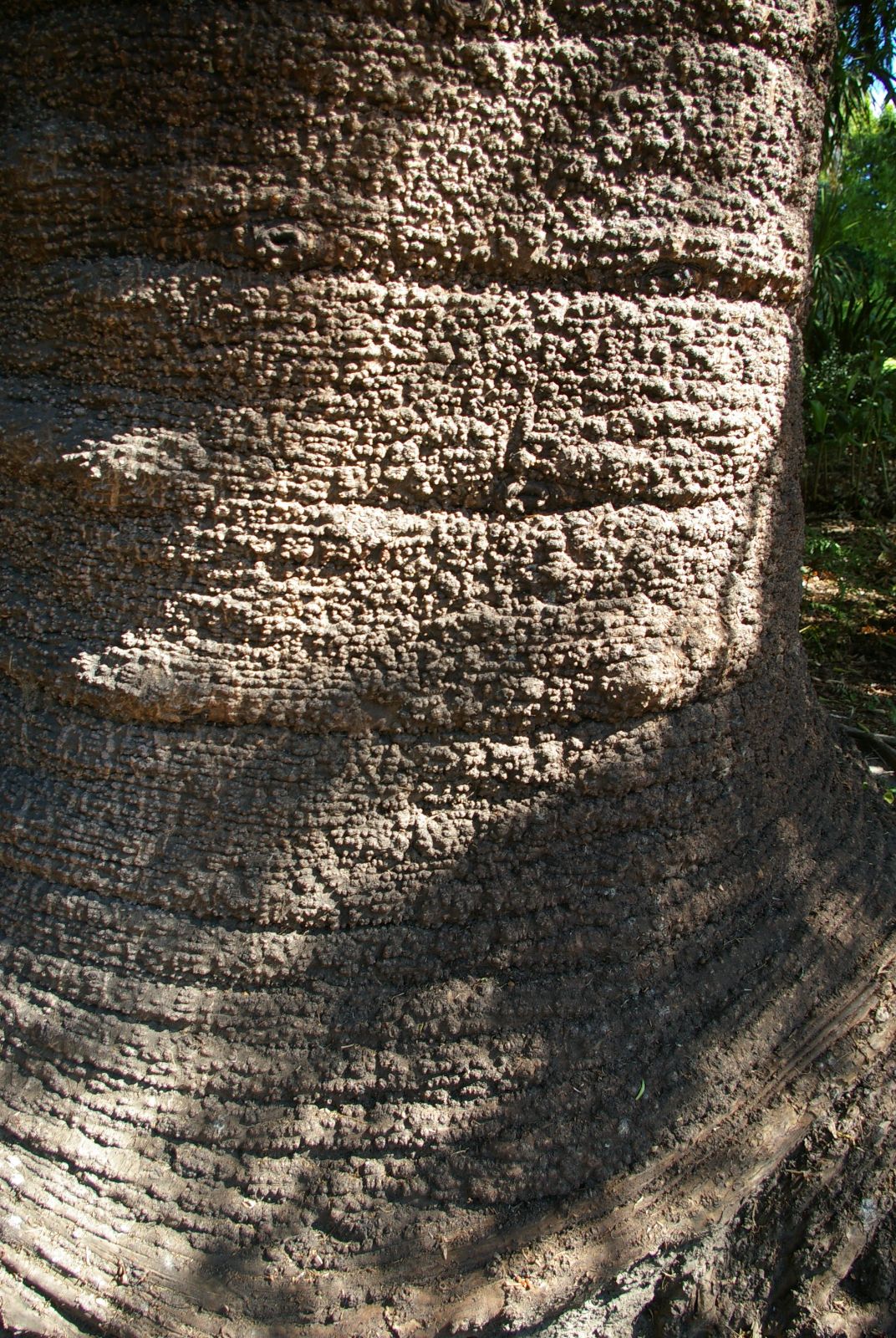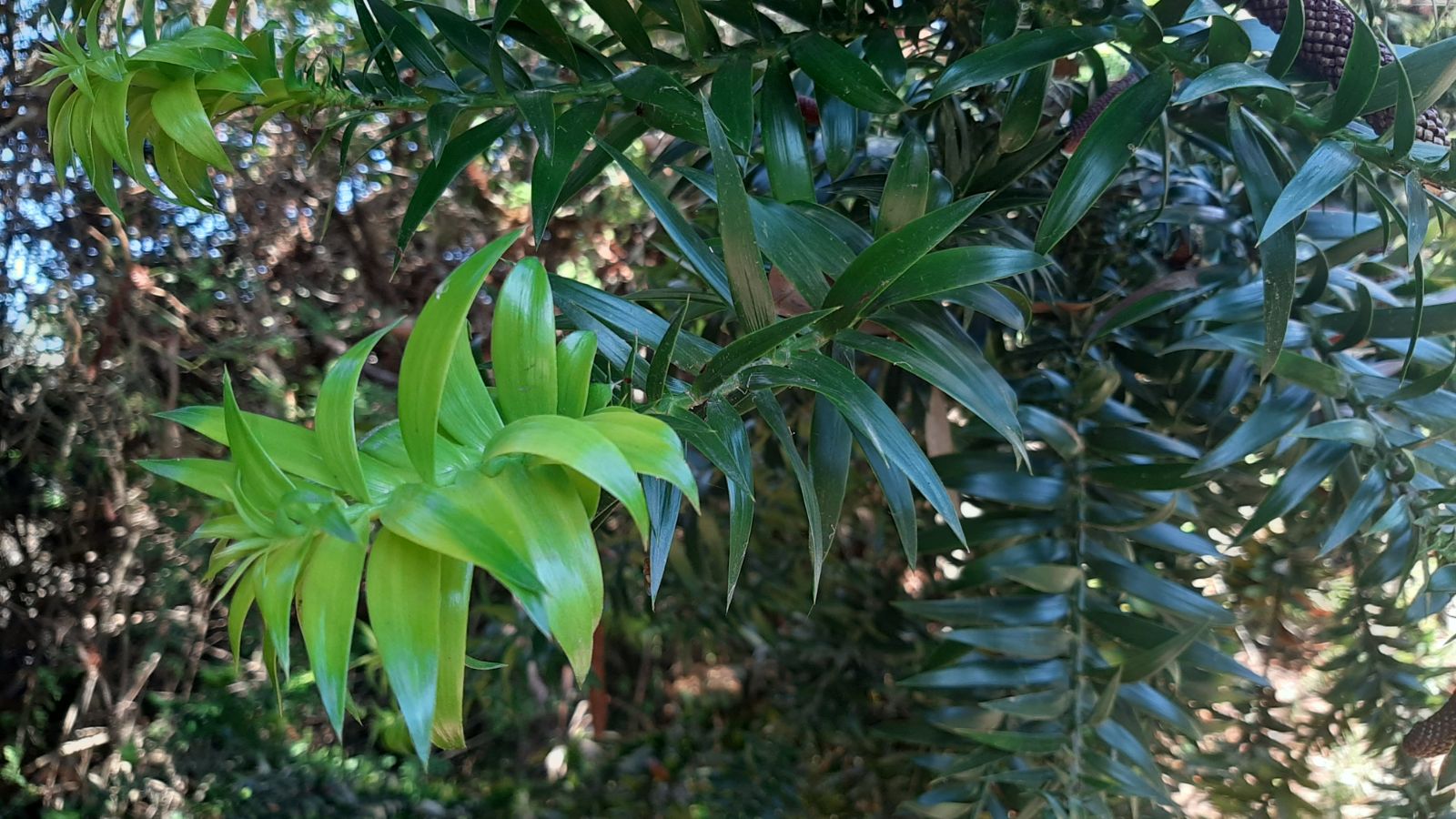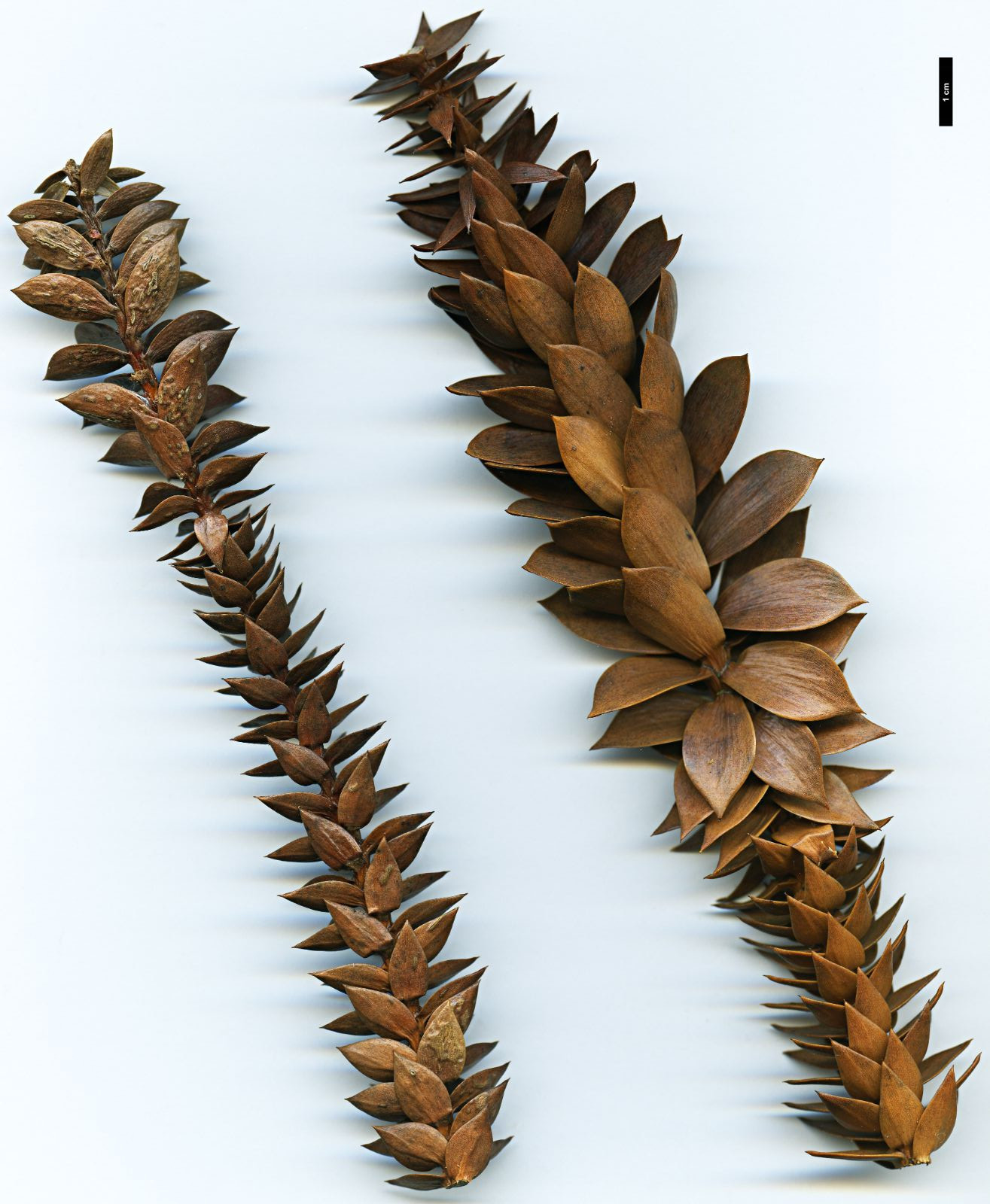Araucaria bidwillii
Sponsor
Kindly sponsored by
Harriet Tupper
Credits
John Grimshaw, Ross Bayton & Tom Christian (2020)
Recommended citation
Grimshaw, J, Bayton, R. & Christian, T. (2020), 'Araucaria bidwillii' from the website Trees and Shrubs Online (treesandshrubsonline.
Genus
Common Names
- Bunya Pine
Tree to 50 m with straight unbranched trunk, to 1.3 m dbh. Bark hard and rough, dark brown to black, peeling in thin layers. Branches long and spreading when mature, forming a dome-shaped canopy with leaves at the tips; trees conical or pyramidal when young. Leaves dimorphic between erect and spreading shoots, and between juvenile and adult phases, though juvenile leaves are usually just smaller than their adult counterparts; on erect shoots the leaves are narrowly triangular to needle-like, on branches they are narrowly triangular with a broad base decurrent on the stem, 2.5–3 × 0.3–1 cm, glossy dark green above, paler below. Male strobili pendulous, sessile, cylindrical, 6–11 × 1–1.5 cm. Female cones massive, ovoid, 20–30 × 15–20 cm, scales winged with a long-acuminate apex. Seeds ovoid, 20–25 × 15–20 mm. (Dallimore & Jackson 1966; Hill 1998).
Distribution Australia Queensland
Habitat Montane rain forests on deep soils.
USDA Hardiness Zone 9-10
RHS Hardiness Rating H3
The Bunya Pine is a magnificent tree in its native Queensland, and is grown quite widely in Australia and elsewhere for its ornamental value (Elliot & Jones 1982). Mature trees can be somewhat hazardous, on account of the risk of being hit by a falling cone. At present there seems to be little danger of this in our area, where it is on the very edge of its tolerance, even in the mildest locations. It has however reached 11 m (33 cm dbh) in the past at Glendurgan, Cornwall (TROBI record from 1965), and the current British and Irish champion is a 10.4 m specimen Mount Stewart, Co Down (Tree Register 2018). It is therefore worth attempting, in the mildest coastal areas of Europe and western North America, but great size and longevity are perhaps too much to hope for. Edwards & Marshall (2019) give an RHS hardiness rating of H1c, but we believe experience in the UK shows this to be overly conservative and we have opted instead for H3.

